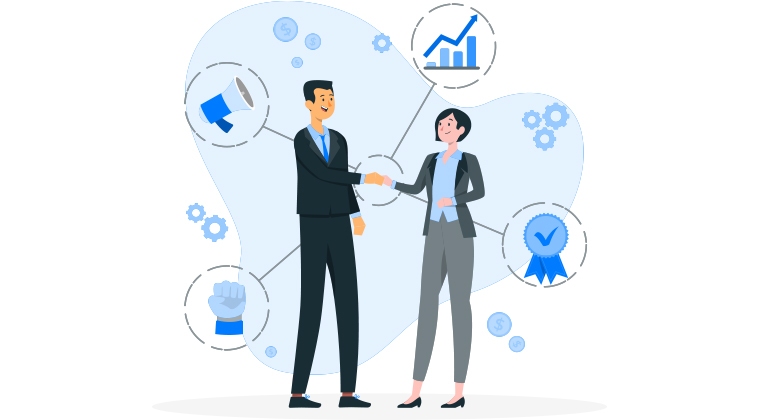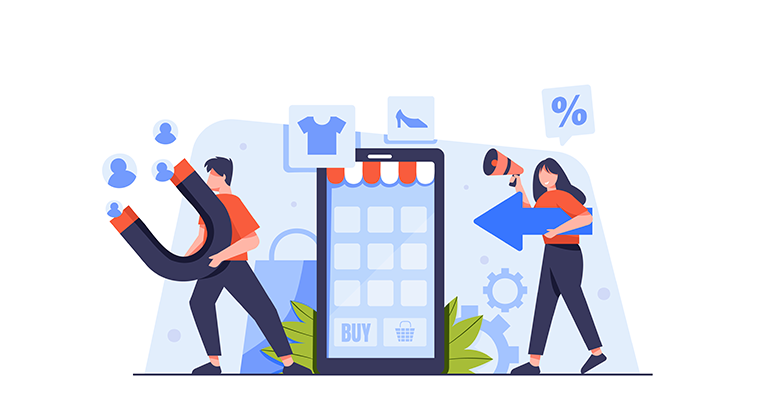ARE SALES ENABLEMENT PLATFORMS THE NEW WAY OF CLOSING SALES?

According to Oracle, Sales Enablement is the set of tools and content provided to your sales teams to help them sell smarter and sell more. Isn’t that what every salesperson is looking for; to be able to close more deals? This is why in this article, we will dig down deeper to understand what a sales enablement platform is, why it’s important and how it can benefit your organisation.
A Sales Enablement Platform is a software that provides salespeople with relevant content, training, coaching, and technology to empower them to close more sales. I think you’ll agree with the fact that sales are a difficult job no matter what geographical market or industry. This is why we as Sales leaders, need to provide as much help as we possibly can in order to make this process less daunting.
Business owners need a sales strategy that increases productivity, provides astonishingly good results and is measurable to the point where success can be replicated with ease. Imagine you finally crack the most difficult code but it wasn’t tracked so you can’t do it again. Poof! There goes your revenue.
Why is Sales Enablement Important?
Salespeople need up-to-date information.
Salespeople are required to be experts in their field. Salesforce goes as far as to say that 74% of sellers said their jobs are becoming more consultative and less transactional (as of 2022). Oftentimes, Salespeople may not have time to keep up with all the latest trends, products or competitors in their industry. Sales enablement platforms can help by providing real-time updates on relevant news stories and industry information that might affect sales opportunities.
Salespeople don't always know what their customers want.
If a salesperson doesn't know which product or service is best suited to address a customer's needs, they won't be able to close the sale successfully. Sales enablement platforms can help by providing access to real-time customer feedback through surveys and other feedback mechanisms.
Customers aren't always aware of what they want.
When a customer isn't sure what they need, it can make it more challenging for a salesperson to close a sale successfully. Sales enablement platforms can help by providing access to customer data and insights which help point them in the right direction. This can easily be done through Digital Sales Room Software within the platform.
Economic uncertainty produces pressure.
Drastic ups and downs in the market cause companies to scrutinise their bottom line. Sales, then are not just about bringing in more revenue, it’s about survival. This puts salespeople under additional pressure which makes them pushy and they end up losing the deal. Sales Enablement Platform helps sales reps provide a better experience for every customer and build stronger relationships with customers.
How will this help your organisation?
1) Improved Sales Performance - Sales reps can use sales enablement tools to find leads, qualify leads and close more deals. The more effective you can make your sales team, the more deals they'll close.
2) Improved Customer Experience - Salespeople will be able to provide better customer service if they have access to all relevant information about each client's history and needs. This will help them provide a better experience for every customer and build stronger relationships with customers over time.
3) Improved Lead Generation - The more leads you generate, the more deals you can close down the line - so it makes sense that having access to all your best leads (and filtering out ones that aren't using your product or service) would make it easier for you to generate new business opportunities.
4) Increase Efficiency - Salespeople waste time looking for information and don't have time to review everything before going into their meeting. This wastes precious time that could be spent on closing more deals! A good sales enablement platform will allow you to set up "playbooks" that automatically send emails right before each meeting so your reps know exactly what they need to bring with them into each meeting and what questions they should ask the prospect during each stage of the sale.
5) Better Communication - Having a central hub where all your information is stored makes it easy for all departments across your company to gather and share key data.
6) Better Strategic Alignment – Sales enablement has changed the way we approach sales. The Harvard Business Review mentioned earlier this year “Enablement in leading organizations is tasked with true capability building — and not simply relegated to onboarding and training,”.
Instead of providing product training to staff, we are now coaching how to add value to the business. Not only does it align staff with corporate strategy but also increases empathetic relationships with customers.
So how can you use Sales Enablement in your Organisation?
The most important factor for success is setting and measuring Key-performance Indicators (KPIs). Start by defining your goals using the SMART Model, establish a specific and measurable revenue goal, and then develop training that brings you closer to reaching it.
Here are a few ideas on KPIs that you can focus on:
- Salesperson Onboarding Time – The time it takes a salesperson to go from newly hired to a product expert. The lower the onboarding time, the quicker they can start bringing in revenue
- Leads to Opportunity Ratio – This ratio tells you how many leads are turned into qualified prospects. A qualified prospect has a lot more likelihood of becoming a customer
- Opportunity to Sales Ratio – This ratio tells you how many qualified prospects became paying customers. Boosting this ratio will ensure maximum revenue is generated.
- Deal Size – What is the average deal size in monetary terms of your sales team? The higher the order value, the higher the revenue.
- Sales Cycle Length – A lot of the time we become complacent when it comes to closing. If we know a sale normally closes in 15 days, we won’t try anything different until the 14th Always try and reduce the number of days it takes a cold prospect to convert into a paying customer as that will bring in revenue quickly.
With that said, don’t focus solely on the quantitative side of things. Change the attitude and behaviour to mould a company culture that portrays value-addition as a norm. Ensure that your sales team is trained to be consultants and not cut-throat sales robots.
Finally, adapt, learn and repeat. Identify what is or isn’t working, make the required adjustments and then right back at it again.

